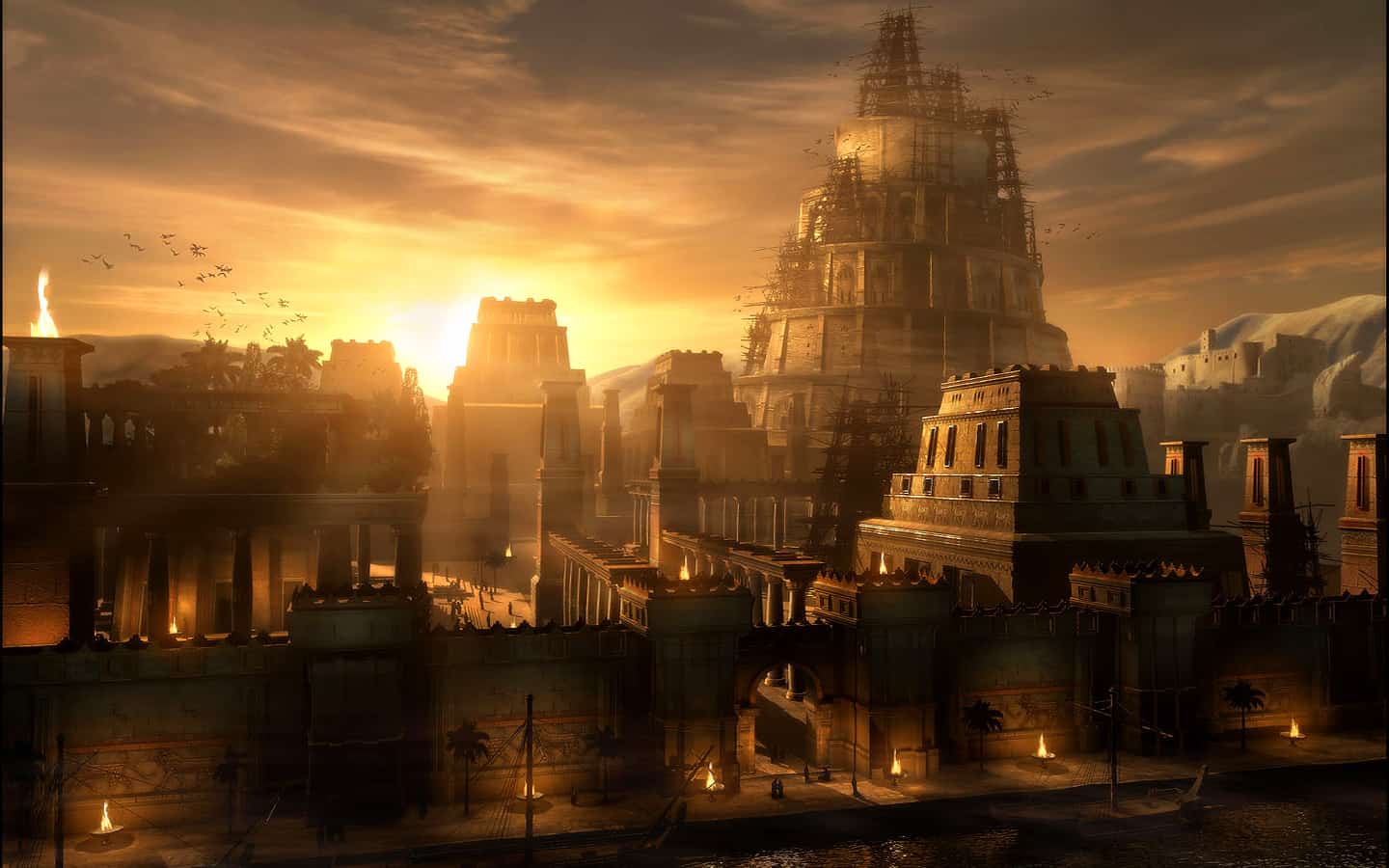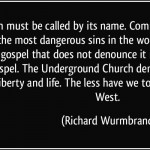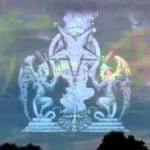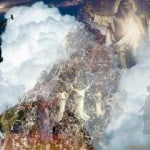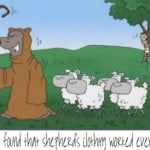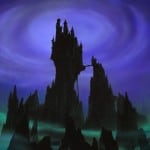The Supernatural Worldview | Cris Putnam
My conviction in this series as well as my complete report in the book (The Supernatural Worldview) is that the Christian has nothing to fear from the pursuit of truth, even from unconventional (or antagonistic) sources. However, many members of my faith tradition have buried their heads in the sand. Dean Radin describes a remarkable shared skepticism of the paranormal between Christians and naturalist skeptics.
On the religious side, within the Judeo-Christian-Islamic traditions, only God (or those he appoints) is allowed to perform miracles. Ordinary folks who perform such feats are considered suspect (by theists) if they’re lucky and heretical if they’re not. And on the scientific side, there is a widely held (but incorrect, as we’ll see) assumption that these phenomena cannot exist because they violate one or more scientific principles.[1]
While there are good reasons to hold some with suspicion, my goal was to investigate the leading and even covert evidence for paranormal and supernatural phenomena and the worldview promoted by parapsychology. My concern is that many Christians are too insulated in their faith communities to adequately understand and address what is coming. While I urge caution when exploring these topics, my hope is that this work will serve as a wake-up call to the Christian apologetics community. We have excluded areas of knowledge that work in our favor, but we’re also threatened by a blind spot. The new paradigm promotes a radical pluralism positioning Christian exclusivism as the odd man out.
The New Babylon
Nearly everyone recognizes that the world is in the midst of a transition. Powerful forces are at work to bring about world  government. Technology facilitates communication and commerce to such a degree that global governance is soon to be a necessity. Recent economic collapses seem to be driving toward a global financial system. For globalism to be successful, the sovereign nation state must go the way of the dinosaur. Conservative analysts have documented a moral decline in Western culture and America specifically. I have noticed it in my lifetime. Former United States Court of Appeals judge, Robert H. Bork, wrote Slouching towards Gomorrah: Modern Liberalism and American Decline in 1996. The title is a play on the final couplet of Yeats’ poem, “The Second Coming,” which reads:
government. Technology facilitates communication and commerce to such a degree that global governance is soon to be a necessity. Recent economic collapses seem to be driving toward a global financial system. For globalism to be successful, the sovereign nation state must go the way of the dinosaur. Conservative analysts have documented a moral decline in Western culture and America specifically. I have noticed it in my lifetime. Former United States Court of Appeals judge, Robert H. Bork, wrote Slouching towards Gomorrah: Modern Liberalism and American Decline in 1996. The title is a play on the final couplet of Yeats’ poem, “The Second Coming,” which reads:
And what rough beast, its hour come round at last, Slouches towards Bethlehem to be born? [2]
Bork contends that the rough beast of decadence is sending us slouching to our new home, which is not Bethlehem, but rather Gomorrah. He argues that Western culture and specifically the United States is declining as a result of modern liberalism and the rise of the so-called New Left. Bork traces the swift rise of modern liberalism since the 1960s, arguing that this legacy of radicalism shows that the precepts of modern liberalism are antithetical to traditional American thought. He exposes the incoherent nature of simultaneously exalting a thorough-going individualism alongside a radical egalitarianism. His arguments persuade, but something is missing.
While he rightly bemoans increased violence, perversion-saturated media, abortion, divorce, euthanasia, feminism, and the decline of religion as evidence of cultural degeneracy, he does not account for the demonic spiritual assault behind it. British New Testament scholar, Dr. Peter Jones, came to America in the early sixties and then took a teaching assignment in France for nearly twenty years. Upon his return, he marveled at how America had changed during his absence:
Does the average Christian know what is going on in our ostensibly civilized society? Pagan ideology, sometimes of the most radical and anti-Christian nature, is taught in university departments of religion, theological seminaries, mainline church agencies, feminist networks and wicca covens across the land. It adopts the name of Christianity, but will render our world unrecognizable…. If you doubt the success of this revolution (1960s), note the following statistic: in 1994, seventy-one percent of Americans and forty percent of those calling themselves “evangelicals” no longer believed in absolute truth.[3]
We aren’t turning pagan because we are politically and socially liberal; rather, we are more leftist because we are increasingly spiritually pagan. Jones is correct that the 1960s were the turning point. However, few scholars of his stature will acknowledge the dark spiritual element involved. On the front lines, Pastor Russ Dizdar, author of The Black Awakening, a book based on a discovered occultist meme forecasting a violent Judgment Day, writes:
Occult historian, James Charles Napier Webb, declared in his work, The Occult Establishment: The Dawn of the New Age and the Occult Establishment, that the second largest proliferation of occult literature was released in the 1960s in the U.S. The first was unleashed in pre-Nazi Germany. What a spinning decade the ’60s were! We saw The Beatles, anti-war movement, the sexual revolution, eastern mysticism, and the 1966 establishment of the modern “Church of Satan” with the release of self-proclaimed dark pope Anton LaVey’s The Satanic Bible (1969). That book spelled out for many, sex, destruction, and even death rituals. The ’60s was only the first dark steps of even darker left-hand path rituals. (Perhaps it was Alistair Crowley or the “Babylon Working” ritual by U.S. rocket scientist, Jack Parsons, that helped open the doors to the modern rise of these dark rituals and manifesting dark powers?) [4]
The conservative’s overemphasis of political ideology is illustrative of rationalism and secularism that has blinded conservatives to the spiritual decay, a topic examined in chapter 4 on demythologization. It seems that the radicalism of the sixties was the impetus for inclusivism (“all spirituality leads to salvation”) from Vatican II, Billy Graham, and across the board to the resurgence of overt pagan universalism. For example, Graham said this when interviewed by Robert Schuller on the Hour of Power television show:
I don’t think that we’re going to see a great sweeping revival that will turn the whole world to Christ at any time. I think James answered that, the Apostle James in the first council in Jerusalem, when he said that God’s purpose for this age is to call out a people for His name. And that’s what God is doing today, He’s calling people out of the world for His name, whether they come from the Muslim world, or the Buddhist world, or the Christian world or the non-believing world, they are members of the Body of Christ because they’ve been called by God. They may not even know the name of Jesus but they know in their hearts that they need something that they don’t have, and they turn to the only light that they have, and I think that they are saved, and that they’re going to be with us in heaven.[5]
If Graham is correct, then a good Muslim earns salvation through his works and missionaries have been throwing their lives away for nothing. If this is really the case, it seems there was no reason for Christ to die. Nonetheless, Jesus believed there was no other way (Matthew 7:13–29; John 14:6; Acts 20:28; Romans 3:21–26, 5:9; Ephesians 1:7, 2:13; Colossians 1:20; Hebrews 9:12, 22). Jesus was an exclusivist, whereas the above inclusivism is nothing short of blatant anti-Christian theology coming from the lips of one of its most famous evangelists.[6]
A new book by Kurt Johnson and David Robert Ord, The Coming Interspiritual Age, illustrates the new Christianized paganism. They argue that we are in the midst of a massive paradigm shift entailing a new interspiritual age. Dr. Johnson is a former monk of the Anglican Order of the Holy Cross, now widely known as an evolutionary biologist, comparative religionist, and social activist. Coauthor David Ord is a former Presbyterian (USA) minister and graduate of San Francisco Theological Seminary. Their vision of the future entails the eradication of world religions toward a global spirituality. They explain how the concept emerged from Roman Catholic mysticism:
The word “interspirituality” was nonexistent until it was coined in 1999 by a Roman Catholic lay monk and pioneer interfaith leader, Brother Wayne Teasdale, in a book aptly entitled The Mystic Heart: Discovering a Universal Spirituality in the World’s Religions. By 2004, when Brother Teasdale and colleagues introduced the perspective at the Parliament of the World’s Religions in Barcelona, Spain, the term was still hardly known. Yet today an internet search for “interspirituality” or “interspiritual” calls up over 100,000 hits.
It’s obvious to many that interspirituality—a more universal experience of the world’s religions, emphasizing shared experiences of heart and unity consciousness—represents part of the world’s ongoing movement toward globalization and multiculturalism. It can be seen as an inevitable response to globalization.… Brother Teasdale predicted that interspirituality would become the global spiritual view of our era. [7]
In remarkable similarity to the New Age of the 1980s and ’90s, the two ostensibly Christian authors extrapolate a metaphysic—in which everything is ultimately the same—from quantum physics and monastic mysticism. The result is the same as the pantheistic monism asserting “Nirvana” or “Brahman” found in Eastern religions, the “Omega Point” of Jesuit mystic Pierre Teilhard de Chardin, extraterrestrial disclosure for the UFO community, and the technological singularity of transhumanism. “All is one,” labeled “oneism” by Peter Jones, is the prevailing spiritual idea of our age. It seems most unlikely that these diverse philosophies would converge on this oneism by chance.
I contend it is by design and leading toward the sine qua non of cosmic history—the return of Jesus Christ to judge the world—described in the book of Revelation. Accordingly, we will be examining how monism (oneism) is promoted by near-death-experience researchers, the paranormal community, and parapsychology. The global spiritual convergence is nothing less than the metaphorical rebuilding of the tower of Babel—brick by brick—in which man’s creative ideas and endeavors, whether spiritual or scientific, reach for greatness, or even for godhood.
This world religion is symbolized in Scripture by “the great prostitute who is seated on many waters” (Revelation 17:1) and by the “woman sitting on a scarlet beast that was full of blasphemous names” (Revelation 17:3). It appeals to everyone because it provides a broad, redemptive road. It reinforces the popular belief that diverse world religions are God’s way of communicating to different cultures at different moments in history. Thus, there are many equally valid paths to God. While this is politically correct theology, it is logically incoherent because the various religions make contradictory truth claims. Despite endorsements by theologians once identified with Christianity, interspirituality amounts to the New Age dressed up in red robes and a fish hat. The ongoing religious convergence coincides with more and more people adopting paranormal beliefs. If the real, Bible-believing church cannot provide adequate answers, people will increasingly turn to parapsychology and spiritualism. We would do well to have a command of the terminology and ideas associated with those areas of inquiry.
TO BE CONTINUED
[1] Dean Radin, Supernormal: Science, Yoga, and the Evidence for Extraordinary Psychic Abilities(Deepak Chopra, 2013) Kindle edition, 26.3/669.
[2] William Butler Yeats. “The Second Coming,” http://www.potw.org/archive/potw351.html (accessed 09/21/13).
[3] Peter Jones, Spirit Wars: Pagan Revival in Christian America (Mukilteo, WA: Winepress, 1997) 35.
[4] Russ Dizdar, “Dark Rituals/Dark Powers,” in Thomas Horn, et. al, God’s Ghostbusters, (Crane MO: Defender, 2011) Kindle edition, 3658–3664.
[5] Hour of Power, program 1426, “Billy Graham and Robert Schuller ‘Say “Yes” to Possibility Thinking,’” May 31, 1997. Clip available here: http://www.youtube.com/watch?v=axxlXy6bLH0.
[6] [6] John MacArthur rebuked Graham here: “A Wideness to God’s Mercy?” Grace to You, February 28, 2010, http://www.gty.org/blog/B1002.
[7] “The Journey: Where Interspirituality Came From,” The Coming Interspiritual Age, http://www.thecominginterspiritualage.com/quotations/2.





